Last week´s highlight was a visit to the northernmost town of Germany, Flensburg. A Sailing City right at the border to Denmark and – next to Kiel – one of Germany´s hotspots when it comes to sailing. I once started a great sailing trip here too. I paid a visit to the Quantum Sails Germany loft where I volunteered to collect a delivery of a complete collection of sailcloth for one of our clients. As it turned out, the forenoon at Quantum became an internship and a lesson in why sailors should opt for good sails.
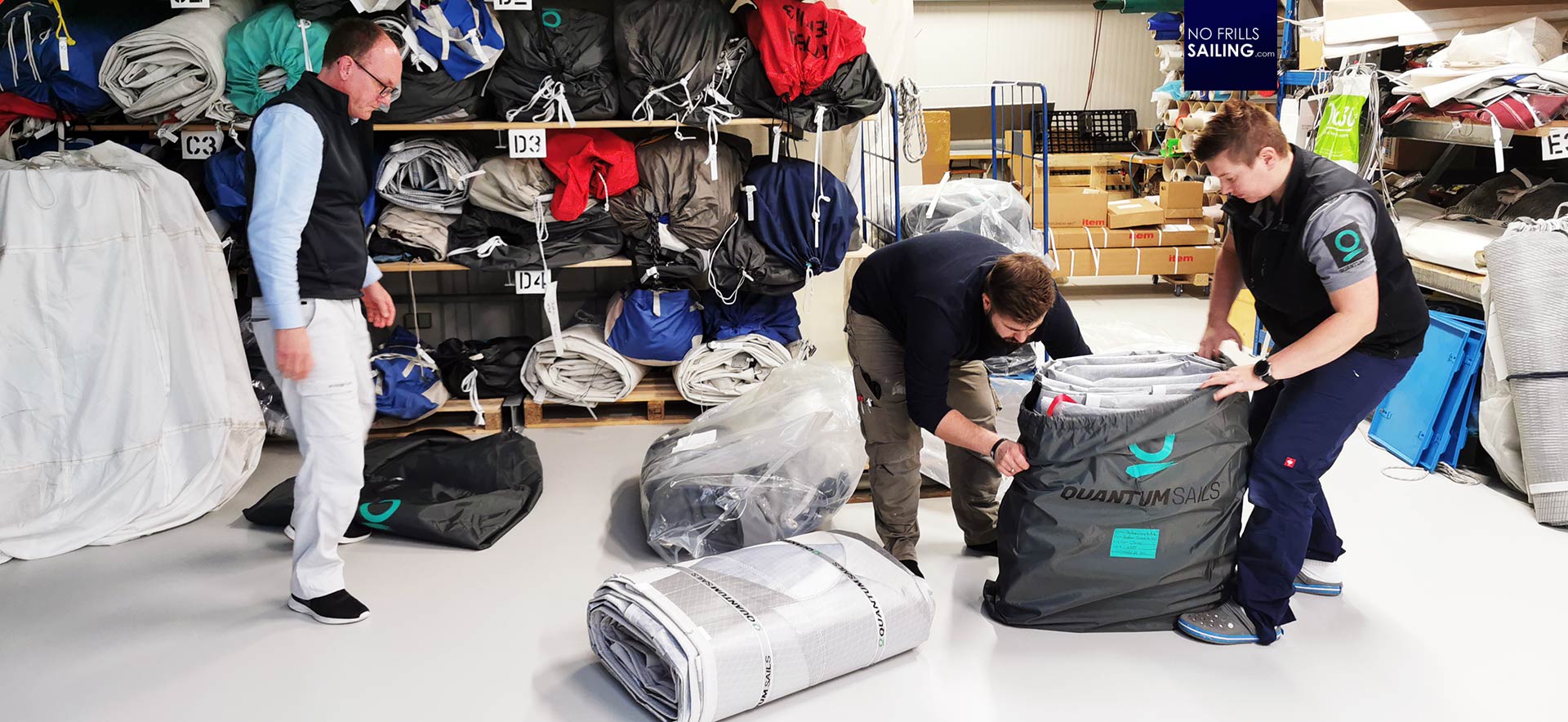
Our client, who went for the “First Line” Oceanis 46.1 which is the performance-version of the renowned cruising yacht with a longer mast is a keen sailor. “Keen sailor” means that of course comfort is a priority for him. But rather than ticking the boxes for amenities like the stern BBQ he went for a set of high quality, tailormade garment by Quantum Sails. Here´s why this was a good decision.
Standard sail cloth vs. high quality
Most cruising yachts, especially those made by the big production boat companies, are equipped with OEM standard sails of the lowest grade. That´s does not necessarily mean that it is of poor quality, but it´s the lowest – aka price-worthiest – of the available grades of garment. When it comes to cruising boats, that´s mostly Dacron, sewed in the so-called crosscut style. Dacron is a long-life material – but relatively fast loosing stability. Losing stability means the profile of the sail disintegrates over time and so does performance. Since a sailboat depends on the quality of the sail, investing in sails will immediately improve performance. More speed, better acceleration means more fun.

I arrive at the loft: 300 square metres, meticulously kept clean. The guys ask me to take off my shoes – the smooth white floor of the sails-shop is cozy and warm. Underfloor heating makes working here comfortable even in the deepest winter. The crew unzips the first of the three large – and very heavy! – sail bags. The mainsail of the Oceanis 46.1 is taken out. One guy each at clew and tack, one guy pulls the head and spreads out the whole sail on the floor. Our owner went for a high quality cruising laminate. It´s called Contender CDX Pro, the sails – Genoa and main – are made in tri-radial cut. This type of sew is far more robust and stable than crosscut and will form a far better profile.

The sails come not just with a solid, long-life laminate which consists of six layers. There are much more features built in. But taking a look at the laminate´s layers, I understand that under the Polyester taffeta protective layers two film- and two layups of polyester garments are backed. CDX Pro is regarded a long-lasting, maintenance-free performance cruising laminate. A well-balanced choice for sailors who are keen on getting the most out of their sails by relying on service-free long product life.
Some features worth the money
This all comes at a price: The mainsail of this 46-feet boat alone is worth 11.500 Euros ex VAT, the Genoa only just 1.000 Euros less. A hefty price. But what more than “just” the features of the laminate itself if sewed into the sails? Sven, owner and boss of Quantum Germany, shows some of them to me. As his crew quality-checks every seam and the quality of the stitching, he inserts the sail-battens – and shows a nice detail. First of all these sails come in “Offshore Configuration” – meaning the sewing is done stronger, hence more durable.

Sven shows me the batten-pockets at the leech: Quantum sails come with the so-called “batten tie-in” system. Once the batten is inserted to the sail, the opening is closed by a small pulley-type of system which insures a safer fastening and faster application of the batten. Nice! The batten themselves pose a threat of serious wear and tear over the years: When sailing on running courses, they might damage the sail by chafing on the shrouds. With Quantum a thick protective application is applied to the batten-pocket that will rise the level of protection.

Another nice feat is the “overhead leech line” which is really a clever thing: Instead of having the leech line – which improves sails trim of the leech – starting at the head and running down the leech ending at the yardarm of the boom, it is re-directed to the clew of the sail. That is an huge improvement because this way the trimming of the leech may be done at any point of sail, at a safe position at the mast step. No sailor has to operate at the rear end of the boom any more.
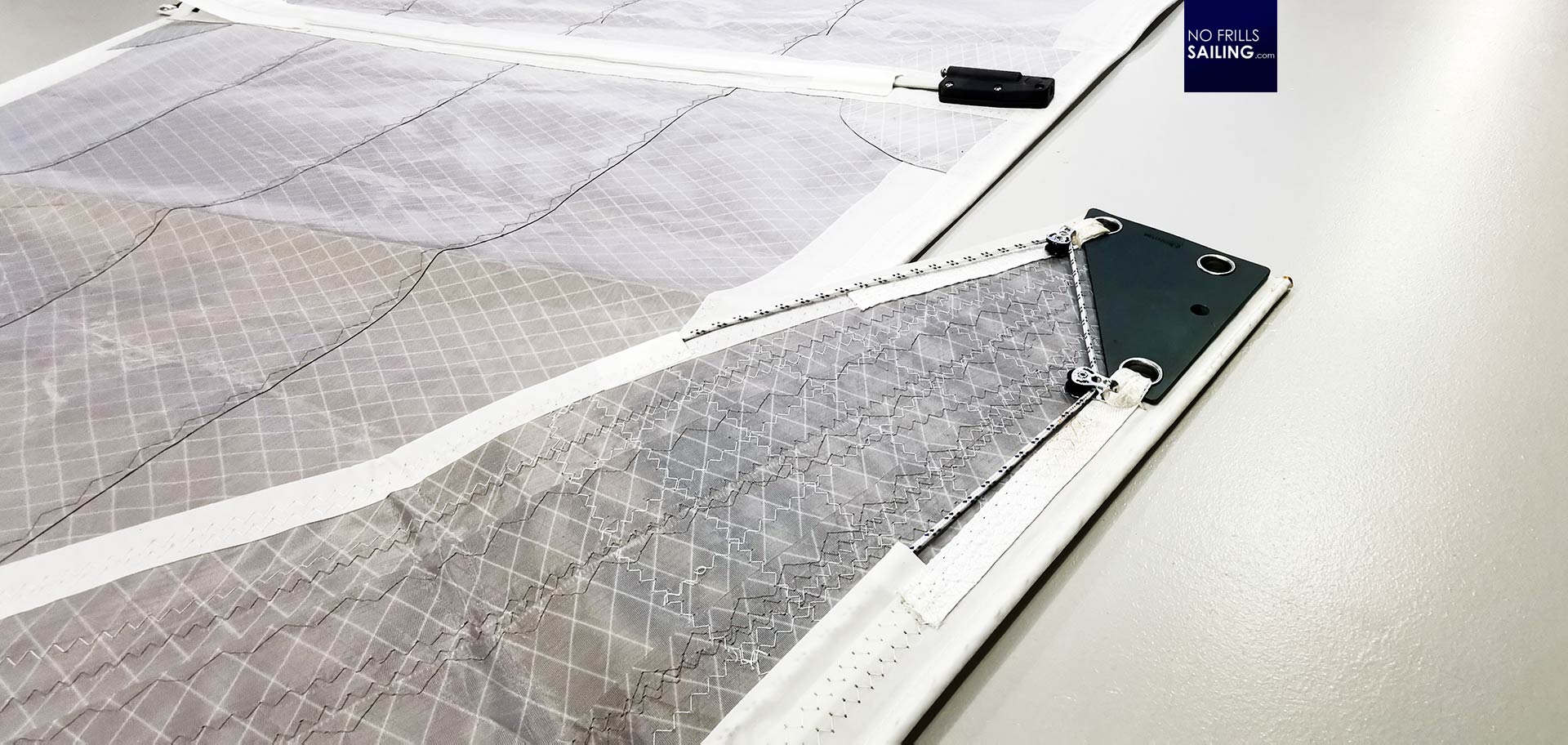
The overhead tie in is also attached to a small pulley protected by some Velcro. It also improves trimming of the sail´s leech because by means of the reduction less power is needed to get the leech trimmed accordingly. I just love these small details, many of them unseen. It´s the outcome of constant invest by the sail designers and sailors worldwide into the development of the sails.
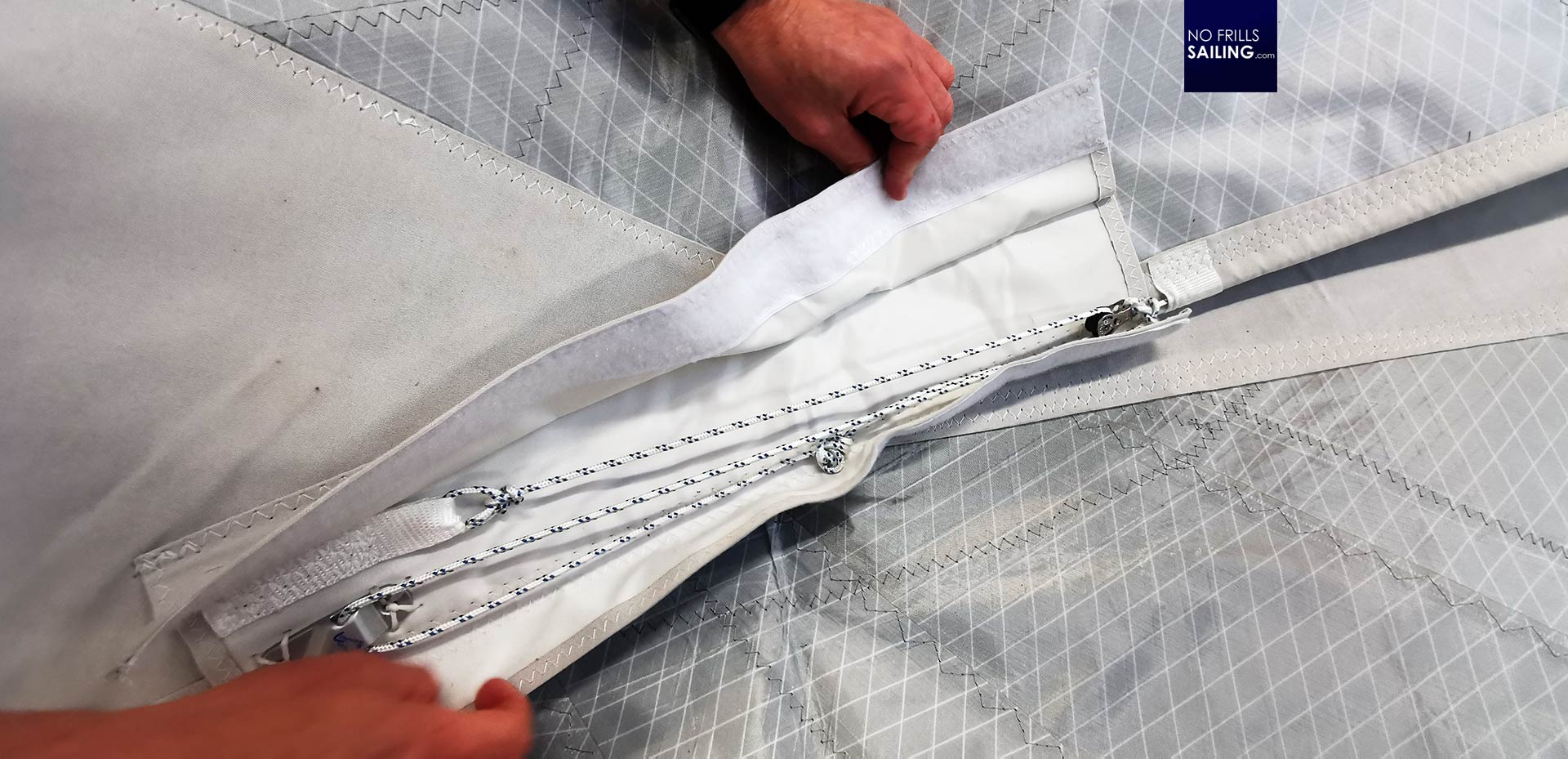
Another nice touch is the UV-protection, which on these particular sails is done in an exemplary manner: First of all, the material itself. It´s quality Sunbrella-garment and not a no-name me-too brand. The thickness of the application is sufficient to block the harming rays from the sun efficiently. The whole stripe is also wrapped around the sail´s foot and leech, covering clew and tack as well. I would say, the people at Quantum´s R&D department have done a great job here.
Personal service & quality control: Gennaker-time!
After checking the standard sails the team is diligently folding the grey-silverish chatoyant garment again and re-stocking the large sails bags again. I can´t wait for delivery of this particular boat – which we have met together with her new owner a couple of weeks ago while on transport to Slovenia. Commissioning of the yacht and her first miles under these sails will be awesome – just imagining seeing the sun and the ocean reflecting on the surface of the garment. Wonderful!

Not less awe-inspiring is the huge Gennaker we unpack and have checked afterwards. Our client ordered this awesome lightwind sail in an impressive dark-blue “Navy” tone and it is a jaw-dropping beauty as well. I know from ordering my own boat how crucial the decision of colors for a yacht is – after all it will be deciding for a boat´s impression on people. Unfolding the huge Gennaker takes just seconds, the huge sailmaker´s workshop is quickly completely dominated by the sail.

This particular Gennaker is made of Fibermax 64 which is a durable garment for sails. It´s an A3 cruising Gennaker promising the best balance between maximum speed output and durablility as well as steadfastness even in a stronger breeze. While the two workers are checking the seams and stitchings, Sven is trimming the leech lines as well. The head gets tied up in the roofing of the loft and we unfurl the spinnaker sleeve.

Which is another deciding detail for a Gennaker. Quantum delivers this sail with an ATN-sleeve which brings with it some benefits over standard sleeves, like for example the Black Box sleeve. First of all the reefing line running inside the sleeve has its own denim channel. Entanglement with the sail or damage of the sail itself is not possible. Secondly, the sleeve is made of three cloth widths in different colors: This way the sailor will be able to easily and instantly see if the Gennaker or the sleeve is twisted. Another difference is the collar: With ATN, this crucial part is made of GRP and much more durable and resistant than just a plastic ring done in spray cast.
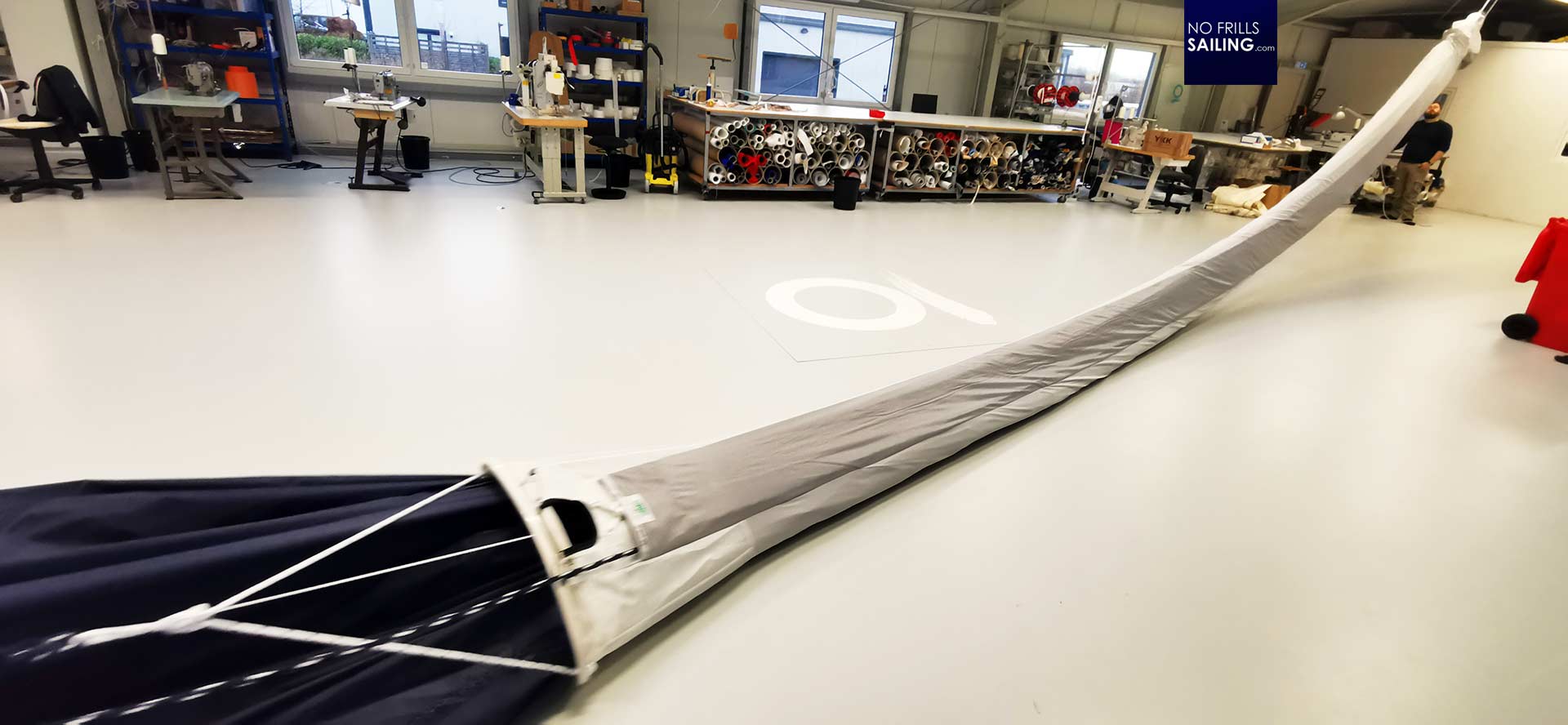
The Quantum crew prepares the Gennaker and attached the sail to the sleeve, checking its spotless quality and functionality. In this, we will be able to at once to hoist this impressive sail upon commissioning and won´t have to do this work in the marina. I am grateful for this service – clearly another pro over standard basic sails delivered in a new boat.
Dear Santa …
So, here we are. Having checked all three sails and re-stocked them in their respective bags, I´ve learned so much during my short, two hour long “internship” at Quantum Sails. I´ve learned a lot about materials and their application, about quality and differences in sails. As a friend of mine once put it: “You won´t go and by a Porsche at the one hand and try to save money on the tyres on the other.”
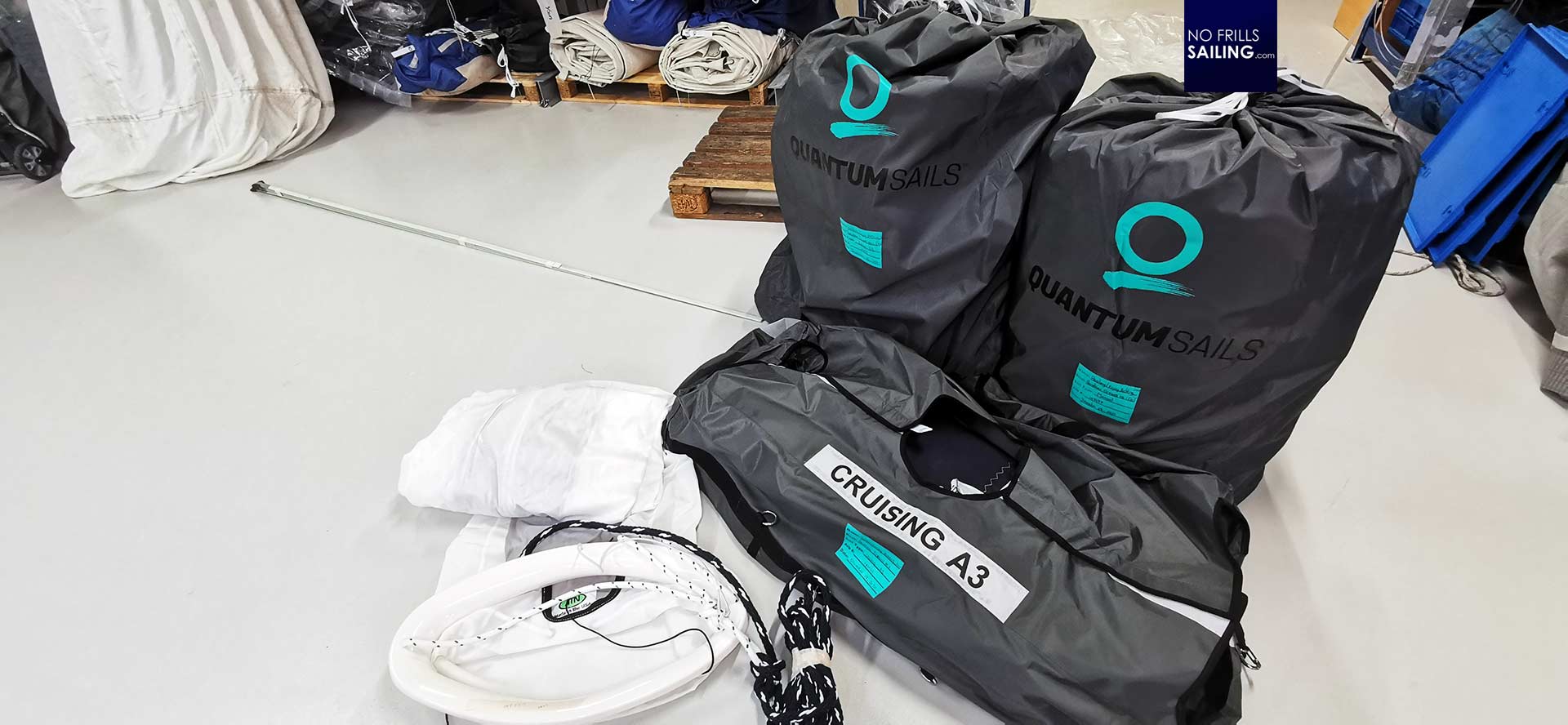
Saving money on sails for a sailboat would be the same. Yes, good sailcloth is expensive – some 28.000 Euros exVAT for this particular set up. But I am convinced that this is the right decision for a keen sailor. We will prove it, by the way: As soon as Covid 19 restrictions allow it we will have the Oceanis 46.1 delivered to her owner. As I will have two similar boats there at the same time, I am going to test-sail both boats “against” each other and thus be able to come up with real numbers in a direct comparison. Best thing about it: Quantum Sails Germany boss Sven agreed to accompany us on that trip for a little sails-trim lesson with the owner. Now that´s what I call service!
You may also like to read:
All articles on Skipper´s Essentials
Lightwind Sails: A test of a brand-new Code 0
Gennaker Sailing: How to tackle it
